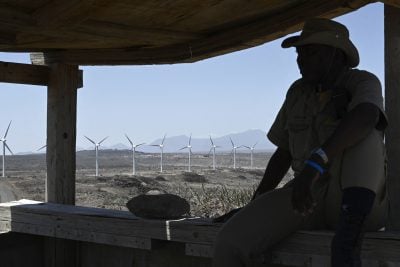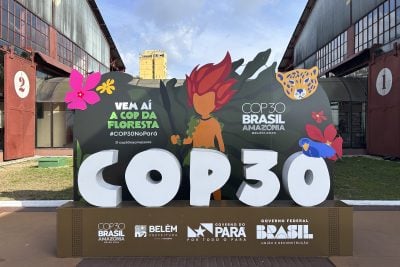Renewables are mounting a growing challenge, but thermal energy continues to play an important role in Africa’s power mix. Neil Ford reports on projects across Africa
Natural gas and coal-fired generating capacity continues to play an important role in Africa’s power mix, but the ground is starting to shift in the face of the ongoing rise of renewables. Coal in particular may be facing a challenge, at least in terms of its share of feedstock, with large scale coal-fired plants being shelved. Gas in contrast should have a continued role to play, even if Covid-19 related issues could stymie project progress over the next year. Gas’s chief selling point – as a transition fuel that can help countries meet ambitious carbon-reduction targets – remains in play, even if the oil and gas industry’s problems may force changes to project scope and scheduling.
Coal gives way to gas in North Africa
There’s a distinct feeling of the calm after the storm in the North African thermal generating sector. In 2018, Siemens completed the world’s three biggest combined-cycle gas-fired plants for Egyptian Electricity Holding Company: Beni Suef, New Capital and Burullus, which collectively provide a colossal 14.4 GW in new capacity. The same year saw Morocco’s 1.4 GW Safi coal-fired plant come on stream. Yet with both countries increasingly embracing renewable energy, it is likely that such big thermal projects will become increasingly rare.
This could be an Africa-wide process in the case of coal, as its forecast rise as an African generation feedstock seems to be fizzling out. For instance, the development of the 6.6 GW Hamrawein coal-fired plant in Egypt has been shelved. It was to have been developed by a consortium of China’s Shanghai Electric and Dongfang Electric, and Egypt’s Hassan Allam Construction. However, it has been reported within the country that an incredible 15.2 GW of coal-fired capacity – all of the capacity in the project pipeline – has now been cancelled or indefinitely postponed.
There is no sign of the position of existing thermal plants being threatened. In January, Abu Dhabi’s TAQA signed an agreement with Rabat for a new PPA for the Jorf Lasfar plant to run from 2027 to 2044, signalling that coal will remain part of the generation mix for decades to come. It also underlines that Morocco’s drive for renewables is underpinned by a desire to promote energy security rather than cutting emissions.
It remains to be seen whether the Covid-19 emergency will have much impact on the development of the planned $4.5bn LNG import terminal, also at Jorf Lasfar in Morocco. The government has been planning to award a contract under tender for its construction. It would have regasification capacity of 7bn cu m/year, much of it bound for a planned, associated 2.4 GW new gas-fired plant, but repeated delays coupled with the ongoing crisis could threaten its development.
The biggest new project in North Africa is not in Egypt or Morocco, as might be expected but in Algeria, where a South Korean consortium signed a deal in January to develop the Umashe 1.3 GW gas fired plant, 340km southeast of Algiers. Hyundai Engineering & Construction Company and Posco International are to develop the project for state owned Sonelgaz. It will greatly increase national generating capacity but it has taken a long time to bring the project this far, as the preliminary deal was signed in 2015. The plant is scheduled to come on stream in 2025.
Côte d’Ivoire leads the way in West Africa
Activity in the thermal sector in Sub-Saharan Africa over the past couple of years has been quieter than in North Africa and shows little sign of picking up, with one or two obvious exceptions. Most surprisingly, there has been less investment in gas-to-power projects than might be expected. Improved regulatory environments in some markets, coupled with a desire to replace ageing diesel-fired generators with more efficient gas-fired plants, were expected to result in the development of smaller fields or stranded gas reserves but this has still not happened.
Perhaps the biggest centre for thermal generating projects in Sub-Saharan Africa is Côte d’Ivoire. World Bank support is driving the development of new capacity, as the country continues the long process of rebuilding the national economy and infrastructure following the damaging civil war and political stalemate that followed. Globeleq Holdings’ Azito gas-fired plant is to be expanded from 457 MW to 710 MW with the support of MIGA guarantees. The expansion will allow older and less efficient thermal units to be decommissioned.
In March, the International Finance Corporation (IFC) agreed €303m ($336m) in funding for the 390 MW Atinkou gas-fired plant, which is to be built west of Abidjan. It will be operated by the Eranove Group, which already owns the 544 MW Ciprel plant in the same country. The IFC considers gas-fired capacity to be a “greener” option for power generation, which it is in comparison with small scale, inefficient diesel plants.
The shortcomings of the Nigerian power sector are well versed. Thermal plants accounted for 10,142 MW out of 12,522 MW of installed generating capacity at the end of last year but the amount actually in operation is often less than half this level, mainly because of gas supply problems. Until these are solved, it seems unlikely that Nigeria’s severe power supply problems will substantially improve.
However, in February 2020, the United States Trade and Development Agency (USTDA) agreed to finance technical, economic and financial studies into the construction of a 1,350 MW combined cycle plant in Abuja, which is to be owned by NNPC Gas and Power Investment Company. USTDA’s grant seems to be the result of US firm GE’s involvement in the project.
Another planned Nigerian gas-fired plant is closer to development. In March of this year, Morocco’s Neo Themis signed a deal to build a 550 MW combined cycle plant in Akure, in Ondo State, for Nigeria’s Kingline Development. The two companies say that costs will be kept down and development speeded up by the presence of existing gas and power transmission infrastructure.
Thermal projects stall in East Africa
The picture on coal-fired projects in East Africa is more mixed than elsewhere on the continent. While the 1,050 MW Lamu coal-fired plant is looking less and less likely to be built, Kibo Energy’s coal-to-power project in southwest Tanzania is progressing. Court action seems to have suspended the development of the Lamu plant, while a series of reports into the project have concluded that it is both uneconomic and environmentally damaging. Apart from producing high volumes of greenhouse gas emissions, coal emits air pollution that results in a variety of lung and other health problems.
Kenya’s National Environment Tribunal revoked one of the project’s licences last year, partly because the National Environment Management Authority had not considered the impact on climate change in awarding it. The US-based Institute for Energy Economics and Financial Analysis says that the scheme would be a “costly mistake” because it would result in the country being tied in to a 25-year PPA on a take-or-leave basis. On the other hand, it is understandable that African governments are reluctant to be lectured on the ills of hydrocarbon-fired power plants, given that emissions from the vast majority of African countries are much lower than in the rest of the world.
By contract, Kibo Energy’s 300 MW Mbeya coal-to-power project in Tanzania is still on course for development. The Tanzanian Ministry of Minerals awarded the developer the necessary mining permits last November to allow it to develop the mine, which has proven reserves of 120m tonnes of coal, and an adjacent mouth-of-mine power plant. In the longer term, the company would like to increase the project’s generating capacity to 1 GW. Construction is expected to take three years and the plant could export some of its output.
The government of Tanzania is looking for a new contractor to complete the expansion of the Kinyerezi I gas-fired project from 150 MW to 330 MW after Norway’s Jacobsen Elektro pulled out. The plant is 85% complete and the government says that the Norwegian firm has been paid 68% of its fee. Prior to the coronavirus crisis, it had been hoped that the plant could be completed before the end of this year but it now looks like taking longer than that to bring it on stream, even once a new contractor has been appointed. Sumitomo Mitsui brought the 240 MW Kinyerezi II combined cycle plant on stream in October 2018.
Difficulties have been reported between Danish firm AP Møller and AEP Energy Africa of South Africa over the future of a 103.57 MW thermal plant in Nairobi. The two firms had planned to buy operator Iberafrica in 2018 but the South African firm has complained that its former partner completed the deal alone without consulting it. In April, AEP Energy Africa appealed to the secretariat of the Common Market for Eastern and Southern Africa to intervene in the dispute.
Coal under pressure in Southern Africa
The coal power sector has run into problems in Southern Africa too, even in South Africa, which has more coal-fired capacity than the rest of the continent put together. In particular, the remaining units at Eskom’s flagship projects over the past decade, Medupi and Kusile, have still not come on stream. Medupi currently has just three of its six units in operation and Kusile one out of six. Each project is eventually due to have generating capacity of 4.8 GW but even in 2012, when costs were rising, they were both expected to be fully on stream by 2017-18.
Estimates vary but construction costs on both projects have certainly overrun by tens of billions of rand and further increases are possible. There have also been numerous technical problems, particularly at Medupi, which tripped dozens of times last year. Eskom had aimed to use the extra capacity provided by the two mega projects to take older plants offline for repair but has been unable to do so. Prior to the Covid-19 emergency, Eskom had again been forced to introduce power rationing, although the supply situation eased when the lockdown began and power demand fell.
Elsewhere, plans for two new 150 MW coal-fired plants in Mozambique were cancelled last October. Japan Bank for International Cooperation and Nippon Export and Investment Insurance had been expected to finance them but decided to withdraw their support, apparently because of a dispute over financial guarantees rather than environmental concerns. However, the government hopes to develop thermal plants fuelled by coal bed methane. A PPA for a pilot 2 MW plant was agreed with developer Tlou Energy in April but commercial scale plants are planned in the longer term.
Progress is inching forward on Kibo Energy’s planned 150-300 MW coal-fired plant in Mozambique, with a preliminary supply agreement signed with Brazilian mining giant Vale last September. Far more capacity will be provided by a proposed 2 GW gas-fired plant to be built in Maputo. An LNG import terminal is to be built in the Mozambican capital that will be supplied by Total with liquefied gas from the far north of Mozambique. It appears that LNG is considered a more economic and probably more secure option than building a north-south gas supply pipeline down the length of the country.
Want to continue reading? Subscribe today.
You've read all your free articles for this month! Subscribe now to enjoy full access to our content.
Digital Monthly
£8.00 / month
Receive full unlimited access to our articles, opinions, podcasts and more.
Digital Yearly
£70.00 / year
Our best value offer - save £26 and gain access to all of our digital content for an entire year!
 Sign in with Google
Sign in with Google 


